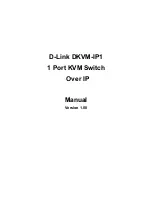
Overview
103
■
The system sets to inactive state the ports which cannot be aggregated with
the port, due to hardware limit (for example, trans-module aggregation is
forbidden).
■
The system sets to inactive state the ports with basic configurations different
from the active port.
Since only a defined number of ports can be added in an aggregation group, then
if the active ports in an aggregation group exceed the maximum threshold for that
group, the system shall set some ports with smaller port numbers (in ascending
order) as active ports and others as inactive ports. Both active and inactive ports
can transmit and receive LACP protocol, but the inactive ports cannot forward user
service packets.
Dynamic LACP aggregation
The system can create/delete automatically dynamic LACP aggregations, and you
cannot add/delete member ports into/from dynamic LACP aggregation. The
system can also aggregate one port, which is called single port aggregation. The
dynamic LACP aggregation LACP is in enabled state. The system can only
aggregate the ports with the same speed, duplex attribute, device connection,
basic configuration.
Since only a defined number of ports can be added in an aggregation group, then
if the current member ports in an aggregation group exceed the maximum
threshold for that group, the system shall set some ports with smaller device ID
(system pr system MAC address) and smaller port ID (port pr port
number) as active ports, and others as inactive ports. If the maximum threshold is
not exceeded, all member ports are active ports. Both active and inactive ports can
transmit and receive LACP protocol, but the inactive ports cannot forward user
service packets. In an aggregation group, the active port with the minimum port
number serves as the master port, while others as slave ports. When comparing
device ID, the system compare system priority first, and then system MAC address
in the case of the same system priority. The smaller device ID is regarded as higher
priority. When comparing port ID, the system compares port priority first, and then
port number in the case of the same port priority. The smaller port ID is regarded
as higher priority. If the device ID changes to higher priority, the active and inactive
state of the member ports in an aggregation group depends on the device port ID.
You can also set system and port priority to define active and inactive ports.
Load Sharing
Types of Load sharing
In terms of load balancing, link aggregation may be load balancing aggregation
and non-load balancing aggregation The 8500 series allocate IP packet load
sharing according to destination and source IP addresses. The switches allocate
non-IP packet load sharing according to source and destination MAC addresses.
You can check protocol types in determining if to use IP or MAC addresses. The
packet with 0800 ETYPE Ethernet field is IP packet. In general, the system only
provides limited resources. The system will always allocate hardware aggregation
resources to the load balancing aggregation groups with higher priority levels.
When the load sharing aggregation resources are used up for existing aggregation
groups, newly-created aggregation groups will be non-load sharing ones. The
priority levels (in descending order) for allocating load sharing aggregation
resources are as follows:
Summary of Contents for Switch 8807
Page 14: ......
Page 32: ...32 CHAPTER 2 COMMAND LINE INTERFACE...
Page 50: ...50 CHAPTER 5 MANAGEMENT INTERFACE CONFIGURATION...
Page 54: ...54 CHAPTER 6 CONFIGURATION FILE MANAGEMENT...
Page 64: ...64 CHAPTER 8 SUPER VLAN CONFIGURATION...
Page 70: ...70 CHAPTER 9 ISOLATE USER VLAN CONFIGURATION...
Page 78: ...78 CHAPTER 10 IP ADDRESS CONFIGURATION...
Page 82: ...82 CHAPTER 11 IP PERFORMANCE CONFIGURATION flag ACK window 16079...
Page 100: ...100 CHAPTER 13 ETHERNET PORT CONFIGURATION...
Page 114: ...114 CHAPTER 15 PORT ISOLATION CONFIGURATION...
Page 158: ...158 CHAPTER 18 DIGEST SNOOPING CONFIGURATION...
Page 162: ...162 CHAPTER 19 FAST TRANSITION...
Page 219: ......
Page 220: ...220 CHAPTER 24 VLAN ACL CONFIGURATION...
Page 234: ...234 CHAPTER 25 802 1X CONFIGURATION...
Page 284: ...284 CHAPTER 28 IP ROUTING PROTOCOL OVERVIEW...
Page 290: ...290 CHAPTER 29 STATIC ROUTE CONFIGURATION...
Page 338: ...338 CHAPTER 31 OSPF CONFIGURATION...
Page 392: ...392 CHAPTER 33 BGP CONFIGURATION...
Page 404: ...404 CHAPTER 34 IP ROUTING POLICY CONFIGURATION...
Page 406: ...406 CHAPTER 35 ROUTE CAPACITY CONFIGURATION...
Page 408: ...408 CHAPTER 36 RECURSIVE ROUTING CONFIGURATION...
Page 416: ...416 CHAPTER 37 IP MULTICAST OVERVIEW...
Page 430: ...430 CHAPTER 39 IGMP SNOOPING CONFIGURATION...
Page 454: ...454 CHAPTER 42 IGMP CONFIGURATION...
Page 462: ...462 CHAPTER 43 PIM DM CONFIGURATION...
Page 506: ...506 CHAPTER 46 MBGP MULTICAST EXTENSION CONFIGURATION...
Page 528: ...528 CHAPTER 48 MPLS BASIC CAPABILITY CONFIGURATION...
Page 632: ...632 CHAPTER 51 MPLS VLL...
Page 652: ...652 CHAPTER 52 VPLS CONFIGURATION...
Page 666: ...666 CHAPTER 53 VRRP CONFIGURATION...
Page 680: ...680 CHAPTER 56 ARP TABLE SIZE CONFIGURATION...
Page 718: ...718 CHAPTER 59 NETSTREAM CONFIGURATION...
Page 728: ...728 CHAPTER 61 POE CONFIGURATION...
Page 736: ...736 CHAPTER 63 UDP HELPER CONFIGURATION...
Page 746: ...746 CHAPTER 64 SNMP CONFIGURATION...
Page 792: ...792 CHAPTER 68 FILE SYSTEM MANAGEMENT...
Page 800: ...800 CHAPTER 69 DEVICE MANAGEMENT...
Page 810: ...810 CHAPTER 70 FTP TFTP CONFIGURATION...
Page 840: ...840 CHAPTER 72 SYSTEM MAINTENANCE AND DEBUGGING...
Page 844: ...844 CHAPTER 74 PACKET STATISTICS CONFIGURATION...
Page 846: ...846 CHAPTER 75 ETHERNET PORT LOOPBACK DETECTION...
Page 860: ...860 CHAPTER 76 QINQ CONFIGURATION...
Page 866: ...866 CHAPTER 77 NQA CONFIGURATION...
Page 876: ...876 CHAPTER 78 PASSWORD CONTROL CONFIGURATION...
















































